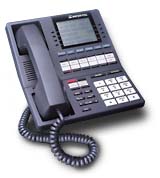| Message-ID: <8bdf868f-e1c2-5251-e520-05dfacfe0b2f@interisle.net>
Date: Wed, 15 Mar 2023 09:06:15 -0400
From: Fred Goldstein <invalid@see-sig.invalid>
Subject: Re: Open RAN: Revolutionary, or a tool for a revolution?
On 3/14/2023 11:33 AM, Bill Horne wrote:
> Until a few minutes ago, I didn't know that something named "open RAN"
> existed, or what it is.
>
> I came across a story on the subject, and I've included the URL for
> the story, and one for a "white paper" that gives technical details,
> below. However, I think we telecom types need to talk - not about the
> technical topic, but about the political and regulatory environment
> that the "Open RAN" concept will create.
>
> "Open" standards which *MIGHT* allow communication - even short-range
> peer-to-peer communication - between disparate devices? The Congressmen
> who had to run for their lives on January 6th of 2001 will discard the
> idea out-of-hand. They don't want, and will not allow, any change that
> removes control of the cellular network from the hands of government
> "EMCOM" specialists who are able to shut down cell networks in any
> area they choose.
>
> Communication without paying a monthly fee to the powers-that-be?
> Heaven Forfend! That's C-C-C-C-Communist! Look, in the corner! It's
> the ghost of Joe McCarthy, standing next to the devil in a J. Edgar
> Hoover costume! We must act quickly!
>
> Bill "Just because you're paranoid doesn't mean they're not out to get
> you" Horne
>
> Understanding Open RAN:
>
https://www.5gamericas.org/understanding-open-ran/?gclid=Cj0KCQjwtsCgBhDEARIsAE7RYh0OwV571xOIxtxT9ifH7QZgVWwhWXEeIqtlUW6uepvg9T1QWKOuhjwaAtIBEALw_wcB
>
> “Transition Towards Open and Interoperable Networks:”
> https://www.5gamericas.org/transition-toward-open--interoperable-networks/
You're making an incorrect assumption about what Open RAN is. They're
doing nothing about spectrum; the carriers are trying to buy it up as
much as possible in order to play Monopoly with it, where you get
higher rent when you have all of the squares on a street and can build
hotels on them, even if nobody checks in.
Open RAN addresses the interfaces between components in a
mobile-carrier base station. This permits one of the cellular
oligarchy to purchase interchangeable components from multiple
vendors, reducing their CapEx. The most important such interface is
the one going to the Radio Unit that attaches to the antenna. LTE and
NR ("5G", an extension to LTE) are extremely complex, and a base
station needs lots of computing power. While there are outdoor base
station units, carriers more typically divide the base station into a
baseband unit that goes indoors and a radio unit that goes outdoors,
on top of the tower, since on mobile bands, especially above 1 GHz,
transmission lines are lossy. Power and a fiber optic cable go to the
RU, which is pretty small. Open RAN allows mix and match between those
manufacturers, and also, it seems, in a few other parts of the cell
site equipment. But if you're not a cellular carrier spending six
figures on electronics at each site, it's no more relevant than, say,
“Open Yacht” or “Open Packinghouse.”
--
Fred R. Goldstein k1io fred "at" interisle.net
Interisle Consulting Group
+1 617 795 2701
|
| Message-ID: <20230314222923.GA1758921@telecomdigest.us>
Date: Tue, 14 Mar 2023 22:29:23 +0000
From: Bill Horne <malQRMassimilation@gmail.com>
Subject: NLRB Announces its Focus on Online Tracking Tools Used to
Manage Remote Worker Performance
A significant concern for managers of remote workers is the ability to
engage, manage and monitor performance and productivity – and some
healthcare employers have turned to technologies like tracking
employee keystrokes, capturing screenshots, and on-camera requirements
for employees during work hours.
This has caught the attention of the National Labor Relations Board’s
General Counsel Jennifer Abruzzo, who recently issued a memorandum
seeking to broaden of the National Labor Relations Act (the “Act”) and
limit the electronic surveillance of employees.
“An issue of particular concern to [her] is the potential for
omnipresent surveillance and other algorithmic-management tools to
interfere with the exercise of Section 7 rights by significantly
impairing or negating employees’ ability to engage in protected
activity and keep that activity confidential from their employer,
if they so choose.” Memorandum GC 23-02, “Electronic Monitoring
and Algorithmic Management of Employees Interfering with the
Exercise of Section 7 Rights” (released Oct. 31, 2022).
https://www.natlawreview.com/article/nlrb-announces-its-focus-online-tracking-tools-used-to-manage-remote-worker?utm_content=8ee33a7b37865f968d1098d99ec381df&utm_source=Robly.com&utm_medium=email&utm_campaign=2022-03-13NLRCybersecurity+Legal+News
--
(Please remove QRM for direct replies)
|
| Message-ID: <20230314225916.GA1759308@telecomdigest.us>
Date: Tue, 14 Mar 2023 22:59:16 +0000
From: Bill Horne <malQRMassimilation@gmail.com>
Subject: You Are Now Accepting A Very Long-Distance Call: FCC To
Propose Regulatory Framework For Satellite-Terrestrial Connectivity
by Laura A. Stefani (Washington) and Melanie English (New York)
New opportunities for wireless communication may be coming, as the
Federal Communications Commission (FCC) considers a new regulatory
regime allowing satellite connectivity by consumer handsets on
terrestrial networks. The draft Notice of Proposed Rulemaking, “Single
Network Future: Supplemental Coverage from Space,” likely to be
adopted at the FCC's March 16 meeting, proposes to allow mobile
service providers and satellite operators to work together to expand
mobile coverage in remote, unserved, and underserved areas. The FCC is
the first regulator to propose rules to allow what some term “cell
towers in the sky,” something that will support emergency
communications, address the digital divide, and incentivize innovation
in satellite and wireless technologies.
Recent industry announcements related to direct-to-handset satellite
communications seem to have given the FCC the push it needed to
act. In August 2022, SpaceX and T-Mobile announced plans for the
second generation of Starlink satellites to provide connectivity
directly to existing wireless phones, making it possible to offer
service without the need for a cell tower. Google responded by
promising that the next version of its Android phone, the Android 14,
also would provide satellite connectivity. And in November 2022, Apple
and Globalstar announced a service that uses Globalstar's licensed
satellite spectrum to provide emergency messaging when Wi-Fi and
cellular service are not available. Other companies are working on
similar service offerings.
https://www.mondaq.com/article/news/1291748?q=1803232&n=726&tp=7&tlk=10&lk=49
--
(Please remove QRM for direct replies)
|



